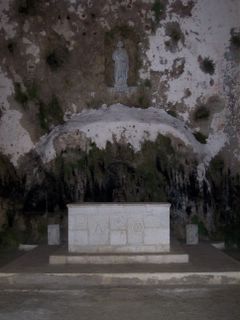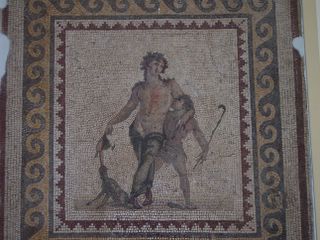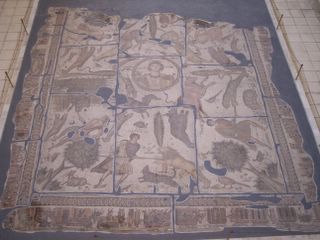Friday, March 4th, 2005
Today I went to Antakya and did some serious sightseeing. It’s a great city with some interesting historical places. Antakya is the city that used to be known as Antioch. Here’s some basic info:
Antakya, located 45 km south of İskenderun, is the largest city in the Hatay. Antakya is the home of Mustafa Kemal University, and is a city filled with history. It is better known as Antioch, and was founded in fourth century BC by Seleucus Nicator, one of Alexander the Great’s generals. It grew quickly into an important commercial city. By the second century BC it held over half a million people, making it one of the largest cities in the ancient world. It was a major trading post on the newly opened Silk Road trade routes from the Mediterranean to Asia, and a center of academic pursuit. It also became known as a city of moral excess, causing St. Peter to choose it for one of the world’s first Christian communities. It remained in prosperity and harmony even after the Roman era, until during the Crusades when it was captured, and its citizens massacred, in the name of establishing a Christian rule. By the time the Ottomans took over, little was left of the ancient metropolis. The French laid the foundations of the modern city when it was under their control in 1938.
The first cool place we went to was the Sen Piyer Kilisesi (St. Peter’s Church), the cave church from where the apostle Peter is said to have preached to the Christian population of Antioch. The accuracy of this is uncertain; theologians agree that Peter spent time in Antioch between AD 47 and 54 and did found one of the world’s first Christian communities there. Some believe that this area is the place where the term “Christian” was first heard, as the name “Nazarene” was used for the group in other parts of the Middle East. Although it is a cave church, it is surprisingly developed. Fifth century mosaic, a fountain, an altar and an escape tunnel can all be seen here. Outside a few sarcophagi can be found, as well as a relief that is thought to be Charon, the ferryman of the River Styx. Every year, a special service is held on June 29 to mark the anniversary of St. Peter’s death.

The outside of the church. Originally it was just the cave; this was added later on once the Christians came out of hiding.

Here's the inside of the cave. A bit dank and drippy, with an altar and a St. Peter statue (both added much later in time).
I really found the church fascinating, but thought that the Charon relief was great. You have to climb up the mountainside a bit, and most of the Turks I’ve talked to didn’t even know it was there! It was like a mini-adventure of discovery.

The Arkeoloji Müzesi (Archelology Museum) is another noteworthy place, due to its collection of locally unearthed Roman mosaics which ranks among the best in the world. These mosaics are in incredible condition and mostly show scenes from Greco-Roman mythology. Most of these mosaics were found in Daphne (now Harbiye), which was Antioch’s main holiday resort. This is reflected in the art of the mosaics, showing scenes of leisure and sometimes decadence. These mosaics are truly beautiful. Check out the photos.

This is the Turkish evil eye, being attacked by many random things like dogs and swords. And also a goblin.

This is Dionysus, staggering drunk. Notice the little doggy drinking his spilled wine!

And this is neat, because it's really really big.
All in all, it was a really fun day. Turkey is so great because there is always incredible history around you. You just have to take the time to check it out!


0 Comments:
Post a Comment
<< Home